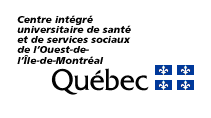2007-09-20

Did you know that the At-Risk Behaviour Unit team of the Psychotic Disorders Program has reduced its use of seclusion rooms by over 50 percent during the 2006-7 period? Or that it’s been so successful at helping patients manage their behaviour, one of two seclusion rooms was closed in Spring 2007? What’s causing this level of success?
New System of Privilege and Code
According to Douglas Intensive Rehabilitation in the Community Services Clinical-Administrative Chief Yvonne Hindle, a main reason for their success has been their implementation of a new system of privilege, “Patients are encouraged to gain points by following their program and adopting appropriate behaviour. They use their points to earn time off the unit and eventual discharge into the community. The system was developed in 2006-7 and, like all initiatives, it’s updated regularly.”
During the 2006-7 period, the team also wrote a Code of Joint Responsibility and Mutual Respect, based in part on patient input. The code clearly outlines patient rights and responsibilities, including definitions of acceptable behavior. It’s posted on the wall of the unit.
The Next Step? A Self-Help Form
Always searching for new ways to help patients achieve recovery, the Perry 2A team is developing a self-help form. It is currently in the testing stage with Perry 2A patient focus groups. Patients use the form to record triggers that cause them to feel agitated, and actions that help relieve those feelings.
Ms. Hindle says, “Eventually, all new patients will complete this form when they arrive on our unit, and will take a photocopy of it with them when they are discharged. Here’s an example of the form in action: a Perry 2A patient in our focus group recently used it to determine that music helps him relieve his symptoms when he feels agitated. Now, when he’s stressed, he goes into his room, and turns on his radio. It works very well for him.”
Changing Profile, Changing Mandate
Ms. Hindle emphasizes, “It’s vital to remember that the profile of Perry 2A patients has changed in recent years. Because our patients are younger than our previous clientele, and 90 percent of them are under legal restrictions, we face new challenges. We must continually upgrade our skills and develop new tools to meet their unique needs.
“Of course, with a changing clientele comes a changing mandate. In the past, Perry 2A was an intensive rehabilitation unit. Now our mandate is two-fold: intensive rehabilitation and risk management.”
Douglas Research Yields New Tool
In order to improve the quality of care and safety levels on the unit and in keeping with this mandate, Douglas researcher Anne Crocker, PhD, is currently conducting a research project in conjunction with Perry 2A patients and staff. Its goal is to evaluate the implementation of a new guide, the Short-Term Assessment of Risk and Treatability (START), for the assessment and management of challenging behaviours. If the project, funded by the Canadian Patient Safety Institute, yields improvements, it may lead to more widespread implementation of such risk management tools on Perry 2A and related units at the Douglas and beyond.
Moving Away From Seclusion
On the topic of seclusion, Ms. Hindle says, “In the twenty-first century, seclusion is no longer a preferred behavior management tool in most modern psychiatric milieus. It is used strictly as an emergency intervention. Instead, today’s staff must constantly look for ways to help patients learn, or relearn, new skills to reduce stress, resolve conflicts, and take responsibility for their ongoing process of recovery. These skills prepare them for their eventual return to the community. I’m proud that recovery is an integral part of the Douglas Institute’s mandate, and of the actions Perry 2A is taking to make recovery happen.”


